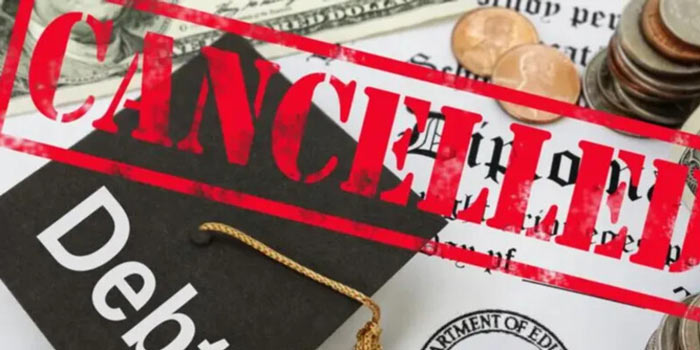Key Factors to Consider Before Taking a 401(k) Hardship Withdrawal
Thinking about tapping into your 401(k) for a hardship withdrawal? Before you make any moves, it's crucial to understand the implications. A 401(k) is a retirement savings plan that allows employees to save and invest a portion of their paycheck before taxes are deducted.
One of its features is the option for a hardship withdrawal, permitting you to access funds before retirement under specific circumstances. However, this decision shouldn't be taken lightly. There are eligibility criteria, potential drawbacks, and alternatives to consider. In this guide, we'll delve into everything you need to know before opting for a 401(k) hardship withdrawal to ensure you make an informed decision about your financial future.
Understanding 401(k) Hardship Withdrawals
Many employers offer a 401(k) retirement savings plan. It allows employees to save and invest a portion of their paycheck before taxes are deducted. One of the features of a 401(k) plan is the option for a hardship withdrawal. This allows you to withdraw funds from your 401(k) account before reaching retirement age under certain circumstances.
Eligibility Criteria
To qualify for a hardship withdrawal from your 401(k) retirement savings plan, you must meet specific criteria set forth by the IRS. These criteria ensure that withdrawals are made only in immediate and significant financial need cases. Here's a breakdown of the common situations that may make you eligible:
Medical Expenses: If you're facing substantial medical expenses for yourself, your spouse, or your dependents, you may be eligible for a hardship withdrawal. This can include expenses not covered by insurance or other sources of funding.
Purchase of a Primary Residence: Needing funds to purchase a primary residence can also qualify you for a hardship withdrawal. This applies to expenses related to buying, building, or even reconstructing a home.

Tuition and Education Expenses: If you're dealing with high educational costs for yourself, your spouse, or your dependents, you may be eligible for a hardship withdrawal. This can cover expenses such as tuition, fees, and books.
Prevention of Eviction or Foreclosure: Facing the risk of losing your home due to eviction or foreclosure can qualify as a hardship. Withdrawals can be used to prevent the loss of shelter for you and your family.
Funeral Expenses: In the unfortunate event of a death in the family, hardship withdrawals can be used to cover funeral expenses. This includes costs associated with burial or cremation.
It's crucial to note that these are general categories, and specific circumstances may vary. Each 401(k) plan may have rules and guidelines regarding hardship withdrawals. Therefore, it's essential to carefully review the terms and conditions of your plan to determine if your situation meets the criteria for a hardship withdrawal.
Potential Drawbacks
While a hardship withdrawal may provide much-needed funds in times of financial distress, it's essential to consider the potential drawbacks before proceeding:
Tax Implications
When you withdraw funds from your 401(k), the withdrawn amount is typically subject to income tax. If you're under 59, you may face an additional 10% early withdrawal penalty imposed by the IRS. This means that a significant portion of the withdrawn amount could go towards taxes and penalties, reducing the actual amount you receive.
Impact on Retirement Savings
Withdrawing funds early from your 401(k) can substantially impact your retirement savings. Since these funds are intended to grow over time to support you during your retirement, taking money out prematurely can significantly diminish the amount available for your future. This reduction in retirement savings could affect your long-term financial security and your ability to maintain your desired lifestyle during retirement.
Restrictions on Contributions
After taking a hardship withdrawal, some 401(k) plans may restrict your ability to make contributions for a specified period. This means that you may be temporarily prohibited from adding more money to your retirement account, further hindering your efforts to save for retirement. The inability to contribute during this time could delay your retirement goals and limit the growth potential of your savings.
Repayment Requirements
Depending on the terms of your 401(k) plan, you may be required to repay the amount withdrawn from your account and any applicable interest within a certain timeframe. Failure to repay the amount as specified could result in further penalties or consequences. This repayment obligation adds a financial burden and could impact your budget and cash flow in the future.
Exploring Alternatives
When you're facing financial difficulties, it's tempting to tap into your 401(k) for a hardship withdrawal. However, before taking that step, it's crucial to explore alternative options that may be less detrimental to your long-term financial health:
Emergency Fund: Building and maintaining an emergency fund is fundamental to financial planning. An emergency fund serves as a safety cushion, offering financial support for unforeseen expenses like medical bills, vehicle repairs, or short-term income loss.

Personal Loans: Depending on your credit history and financial situation, you may qualify for a personal loan with more favorable terms than a 401(k) hardship withdrawal. Personal loans typically offer fixed interest rates and structured repayment plans, providing a predictable and manageable way to cover your financial needs.
Budgeting and Financial Planning: Taking a close look at your budget and financial situation can help identify areas where you can cut expenses or increase income to address your immediate financial needs. Start by tracking your spending habits and identifying areas to trim unnecessary expenses. Consider negotiating with service providers to lower your monthly bills or exploring opportunities to increase your income through side gigs or freelance work.
Conclusion
While a 401(k) hardship withdrawal can offer a lifeline in times of financial crisis, it's essential to weigh the potential consequences carefully. Before taking this step, thoroughly assess your financial situation, explore alternative options, and consult a financial advisor to ensure you make the best decision for your long-term financial well-being.












